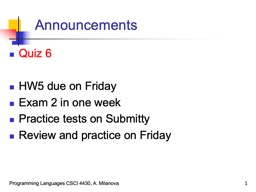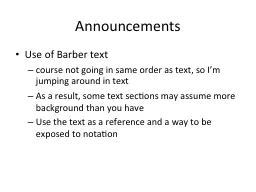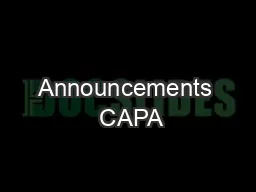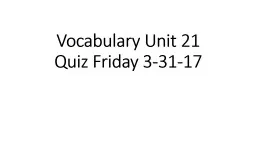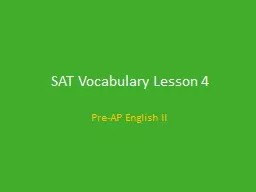PPT-Announcements Quiz 6 HW5 due on Friday
Author : jasmine | Published Date : 2023-06-22
Exam 2 in one week Practice tests on Submitty Review and practice on Friday Programming Languages CSCI 4430 A Milanova 1 Lambda Calculus Lecture Outline Quiz 6
Presentation Embed Code
Download Presentation
Download Presentation The PPT/PDF document "Announcements Quiz 6 HW5 due on Friday" is the property of its rightful owner. Permission is granted to download and print the materials on this website for personal, non-commercial use only, and to display it on your personal computer provided you do not modify the materials and that you retain all copyright notices contained in the materials. By downloading content from our website, you accept the terms of this agreement.
Announcements Quiz 6 HW5 due on Friday: Transcript
Download Rules Of Document
"Announcements Quiz 6 HW5 due on Friday"The content belongs to its owner. You may download and print it for personal use, without modification, and keep all copyright notices. By downloading, you agree to these terms.
Related Documents

